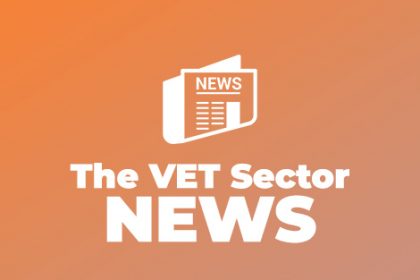As your company grows, it is important to ensure that your compliance and integrity risk processes evolve to keep pace. This means structuring your processes to enable consideration of various risks across your business, and undertaking regular reviews of your compliance and integrity programs. It may also mean introducing new or revised standards, or making other changes to your GRC architecture.
There are a number of benefits that come from continuously improving your organisational approach to compliance risk. Firstly, it enables you to keep up with the latest best practices and regulatory changes. This helps you ensure that your company is complying with all relevant laws and regulations, and minimising its exposure to compliance risks. Secondly, it allows you to identify and address potential problems early on, before they escalate into larger issues. Finally, it enhances your organisation’s reputation by demonstrating your commitment to compliance and integrity.
If you want to improve your company’s compliance risk management processes, there are a few things you can do. First, consider conducting a review of your current GRC architecture. This will help you identify any areas where your processes could be improved. Secondly, make sure that you have a clear understanding of the latest compliance and integrity risks that your company faces. This will help you ensure that your processes are designed to mitigate these risks. Finally, keep up to date with the latest best practices and regulatory changes. This will help you ensure that your company’s compliance risk management processes are always up to date.
Review your process regularly. Schedule a regular review of your compliance risk process, at least annually. This will help ensure that it remains relevant and up-to-date.
Keep up with changes in the law. Make sure you are aware of any changes in legislation that could impact your compliance risks. Stay informed by subscribing to updates from relevant regulatory bodies or using a service like Compliance Monitor.
Be proactive in identifying new risks. As your company grows and changes, new compliance risks may emerge. Be proactive in identifying these risks, and put processes in place to mitigate them.
Communicate with employees. Keep employees informed of changes to your compliance risk process, and make sure they understand their role in upholding compliance. Encourage employees to report any concerns they have about potential compliance risks.
Invest in technology. Use technology to automate and streamline your compliance risk process where possible. This will help you save time and resources, and reduce the likelihood of human error.
By regularly reviewing and updating your organisation’s approach to compliance risk, you can ensure that you remain ahead of the curve and are prepared for whatever challenges come your way.
An effective compliance risk management process will help you to identify, assess and manage risks across your organisation. It should be tailored to the specific needs of your business and take into account the evolving nature of your operations.
A key element of an effective compliance risk management process is regular monitoring and review. This will ensure that risks are being properly managed and controlled, and that any changes in your business operations are taken into account.
Regular communication with all levels of your organisation is also essential. This will ensure that everyone is aware of your compliance risk management process and their role in ensuring its effectiveness.
When it comes to business, there are a variety of risks that need to be considered. Some of these risks may be financial, operational, or even reputational. In order to effectively manage these risks, it is important to have processes in place that enable you to consider them all.
One way to do this is by creating a risk management committee. This committee should meet on a regular basis to discuss potential risks and how they can be mitigated. Additionally, the committee should create and maintain a risk register. This register should include all of the potential risks that have been identified, as well as the actions that are being taken to mitigate them.
Another way to structure processes to enable consideration of various risks is by conducting regular risk assessments. These assessments should be conducted at both the strategic and operational level. During these assessments, all potential risks should be identified and evaluated. Based on the results of the assessment, appropriate actions can then be taken to mitigate any risks that are deemed to be high priority.
Structuring processes are important in any business as they provide a framework for managing risks and making decisions. By breaking down the business into manageable chunks, it becomes easier to identify potential risks and mitigate them accordingly. There are a number of ways to structure processes, but all should aim to promote transparency and communication between different departments within the company.
One popular method is known as the “fishbone diagram.” This approach gets its name from its similarity to the skeleton of a fish, with each “bone” representing a different process or department within the company. By mapping out these processes, it becomes easier to see where potential problems might arise and take steps to prevent them.
Another common structuring method is known as SWOT analysis. This involves looking at the company’s strengths, weaknesses, opportunities, and threats in order to identify potential risks. This approach can be particularly useful when planning for future growth, as it can help highlight areas where the company may be vulnerable.
Whatever method you choose, it’s important to make sure that all employees are aware of the process and have a clear understanding of their role within it. By having everyone on board, you can ensure that risks are identified and dealt with quickly and effectively.
One of the most significant changes in recent years has been the introduction of the General Data Protection Regulation (GDPR). This landmark EU regulation came into force in May 2018 and significantly strengthens data protection rules.Organizations that process personal data must comply with a number of requirements under GDPR, including ensuring that data is collected and processed lawfully, transparently and with the individual’s consent.
Another major change that has taken place in recent years is the UK’s withdrawal from the European Union (EU). This has implications for organizations that do business in the UK and/or the EU, as there are now a number of new rules and regulations that need to be followed. For example, businesses that trade with the EU will now need to comply with customs declarations and other administrative formalities.
As you can see, compliance is an ever-changing area, and it is important for organizations to keep up-to-date with the latest developments. Failing to do so could result in significant penalties, including fines, reputational damage and even imprisonment.
Flexibility and accommodation are key considerations in any Governance, Risk, and Compliance (GRC) architecture. An effective GRC system must be able to adapt to the ever-changing landscape of regulations, risks, and business needs. It is also important that decisions made within a GRC system are based on accurate and up-to-date information. A well designed and implemented GRC system can provide tremendous benefits to an organization, including improved risk management, compliance with regulations, and increased efficiency. However, there are several common pitfalls that can occur during the design and implementation of a GRC system. These pitfalls can lead to a less effective GRC system and can even put the organization at risk. It is important to be aware of these pitfalls and take steps to avoid them.
One common pitfall is failing to keep the GRC architecture flexible and accommodating. As business needs change and new regulations are enacted, the GRC system must be able to adapt. If the architecture is not flexible, it will become difficult or even impossible to make changes, which can lead to compliance problems and increased risks. Another common pitfall is failing to make effective decisions. The GRC system must be designed in a way that allows for accurate and up-to-date information to be used in decision making. If decisions are made based on outdated or inaccurate information, the results can be disastrous. Finally, another common pitfall is failing to properly design and implement the GRC system. If the system is not designed and implemented correctly, it will not be effective and could even put the organization at risk.
By taking steps to avoid these common pitfalls, organizations can ensure that their GRC system is more effective. An effective GRC system is essential for managing risk, complying with regulations, and increasing efficiency. By avoiding these common pitfalls, organisations can make sure that their GRC system is able to meet these objectives.
Improving your organisational approach to compliance risk doesn’t have to be a difficult or time-consuming process. By taking a few simple steps, you can make sure that your company is always compliant with the latest laws and regulations, and that your processes are always up to date. This will help to protect your company’s reputation, and minimise its exposure to compliance risks.










